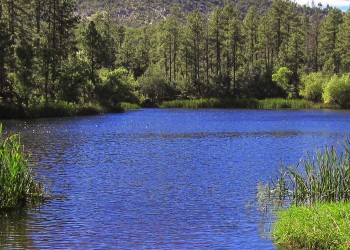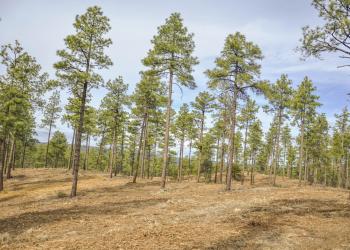Water, Air and Soil
Water is a precious resource—especially in the desert.
Prescott National Forest’s rugged topography provides important watersheds: large areas of land that collect rainwater and send it to the Verde and Agua Fria Rivers. Within these watersheds are many continuously or seasonally flowing streams and drainages—important aquifer recharge areas that supply clean water to neighboring communities. The public enjoys recreational activities on the Forest’s lakes and rivers, and these waterways support a wide variety of vegetation, fish, and wildlife.
The Prescott Forest Reserve, precursor to what is now Prescott National Forest, was set aside in 1898 to protect water sources for the area’s growing communities. Since this time, the population has grown tremendously, and protecting water sources continues to be a high priority for forest managers. Forest projects to protect water supplies include cleaning up contaminants at abandoned mine sites; eradicating non-native species—such as the thirsty Tamarisk invading the banks of the Verde River; controlling erosion by maintaining and improving roads and trails; and implementing travel management to keep the area’s fragile soils and vegetation in place.
Forest to Faucets

The USDA Forest Service National Forests to Faucets 2.0 Assessment builds upon an earlier version of the project from 2011. The Assessment uses Geographic Information Systems (GIS) to determine the relative importance of small watersheds to surface drinking water. Imbedded in the data is the vital role forests play in protecting source water: the extent to which these forests are threatened by development, insects and disease, and wildland fire.
Clean Air

Across the US, lichen biomonitoring is helping federal land managers meet federal and agency responsibilities to detect, map, evaluate trends, and assess the ecological impacts of air pollutants.
Soils

“The history of every Nation is eventually written in the way in which it cares for its soil.”
~ Franklin D. Roosevelt.
Statement on Signing the Soil Conservation and Domestic Allotment Act, 1936.



